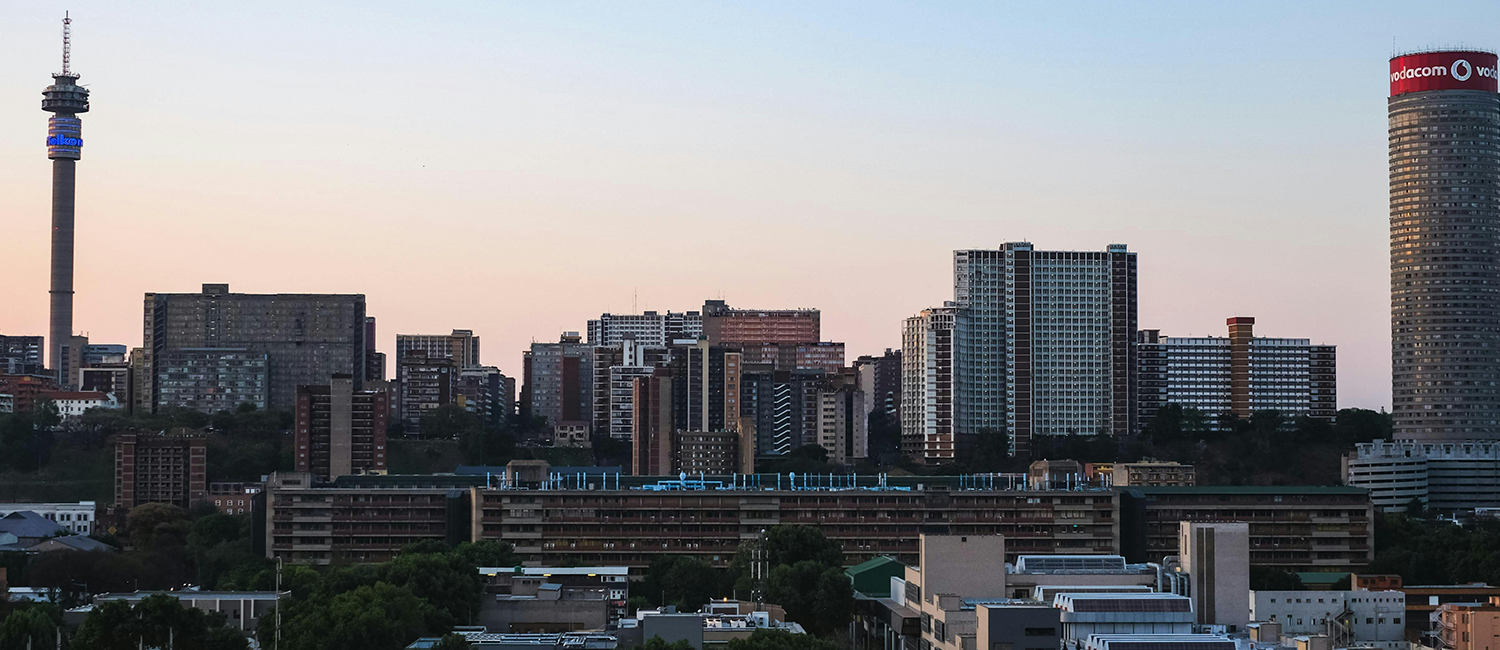Eco-mobility could help to guide future urban planning and transport investment, Gauteng Transport MEC Ismail Vadi said as he launched the province’s Transport Month campaign on Wednesday, 30 September.
The MEC arrives at Rea Vaya’s Library Gardens stationTransport MEC Ismail Vadi arrives at Rea Vaya’s Library Gardens station, preparatory to catching the bus to Park Station.Eco-mobility was one of the main themes of MEC Vadi’s launch address at the Sandton Gautrain Station, with national Transport Month this year coinciding with the hosting of the second EcoMobility World Festival in Sandton in October.
And the MEC, who challenged Joburg residents in particular to support the Festival, was more than just talk on the subject himself, having gone from a Rea Vaya bus to the Gautrain to a tuk-tuk to get to launch event.
Even though his tuk-tuk ride was not strictly necessary, he had wanted to fetch a guest from a Sandton hotel, so he had taken a tuk-tuk there and back to the Sandton Gautrain Station – and was still in good time to deliver his address.
MEC Vadi said the Gautrain station had been chosen as the launch venue “as it represents a new, public transport, inter-modal facility where minibus and metered taxis, Gautrain buses and the Gautrain interface can operate”.
SEAMLESS INTER-MODAL TRANSPORT CONNECTIONS
The MEC rides the GautrainThe MEC rides the Gautrain from Park Station to Sandton.Like Park Station – where he had seamlessly switched from a Rea Vaya bus – the Sandton Gautrain Station “is emerging as an important inter-modal facility for thousands of commuters and travellers”, he said.
This kind of seamless connection between different modes of transport is a key element of eco-mobility, which the MEC defined as “an integrated form of environmentally sustainable mobility that combines the use of non-motorised transport with the use of public transport, which allows people to move in their local environments without using privately owned vehicles.
“It is a bottom-up approach in which an individual makes a personal, conscious decision not to use a car as the means of transport, and can serve as a future guide for urban planning and transport investment,” the MEC said.
The EcoMobility World Festival, by giving preference to walking, cycling, wheeling and public transport to move through and around Sandton in October, would showcase “[the] possibility of more liveable and sustainable cities, with reduced levels of air pollution and traffic congestion”.
ACTIVELY IMAGINING A MORE LIVEABLE, SUSTAINABLE CITY
The MEC with City of Joburg Transport MMC Christine WaltersThe MEC is met at the Sandton Gautrain Station by City of Joburg Transport MMC Christine Walters.Vadi said the province and the country would be watching what happened in Sandton this Transport Month “as we collectively grapple with the urgent need to build more sustainable cities”.
This was an opportunity for a variety of stakeholders to participate in, and actively imagine, an alternative to the current car-centric nature, not only of Sandton and greater Johannesburg but of many cities across the globe.
“Whilst some are apprehensive about how this will impact on their daily activities, we urge all Gauteng residents to experiment with an idea that can transform our understanding of urban spaces for a long time to come,” the MEC said.
“Eco-mobility is an opportunity for us as individuals, families, communities, businesses and government to come together to create a new vision, and to experience how things could be.”
GOVT ‘COMMITTED TO INTEGRATION OF TAXI INDUSTRY’
Vadi said the Gauteng government was committed to the modernisation of public transport infrastructure as a key pillar of its programme to transform, modernise and re-industrialise the province.
One prerequisite for this, he said, was the integration of the taxi industry into the modernised public transport system that was being built in Gauteng. Over the past three months, the government had engaged with the leadership of the taxi industry in order to find common ground on the best model for this integration.
“However, we need more time to discuss various proposals … on the best way forward, drawing on lessons of how various municipalities have involved the taxi industry in the roll-out of the bus rapid transit (BRT) system in Johannesburg, Ekurhuleni and Tshwane.”
ULTRA-MODERN NEW RAIL CONTROL CENTRE TO OPEN
Another prerequisite for the modernisation of public transport infrastructure, Vadi said, was the positioning of rail systems at the centre of the province’s public transport network.
On 5 October, national Transport Minister Dipuo Peters is scheduled to open the Passenger Rail Agency of SA’s (Prasa’s) newly built Gauteng Control Centre next to Esselen Park in Tembisa.
“This is an ultra-modern rail signalling and control centre that will open the way over time for the operation of new signalling systems on our rail tracks, initially in Gauteng, and then nationally,” the MEC said.
“This modernisation of the rail signalling system is a vital step for the future integration of the Metrorail and Gautrain systems, and is consistent with the transformation, modernisation and re-industrialisation agenda of the provincial government.”

